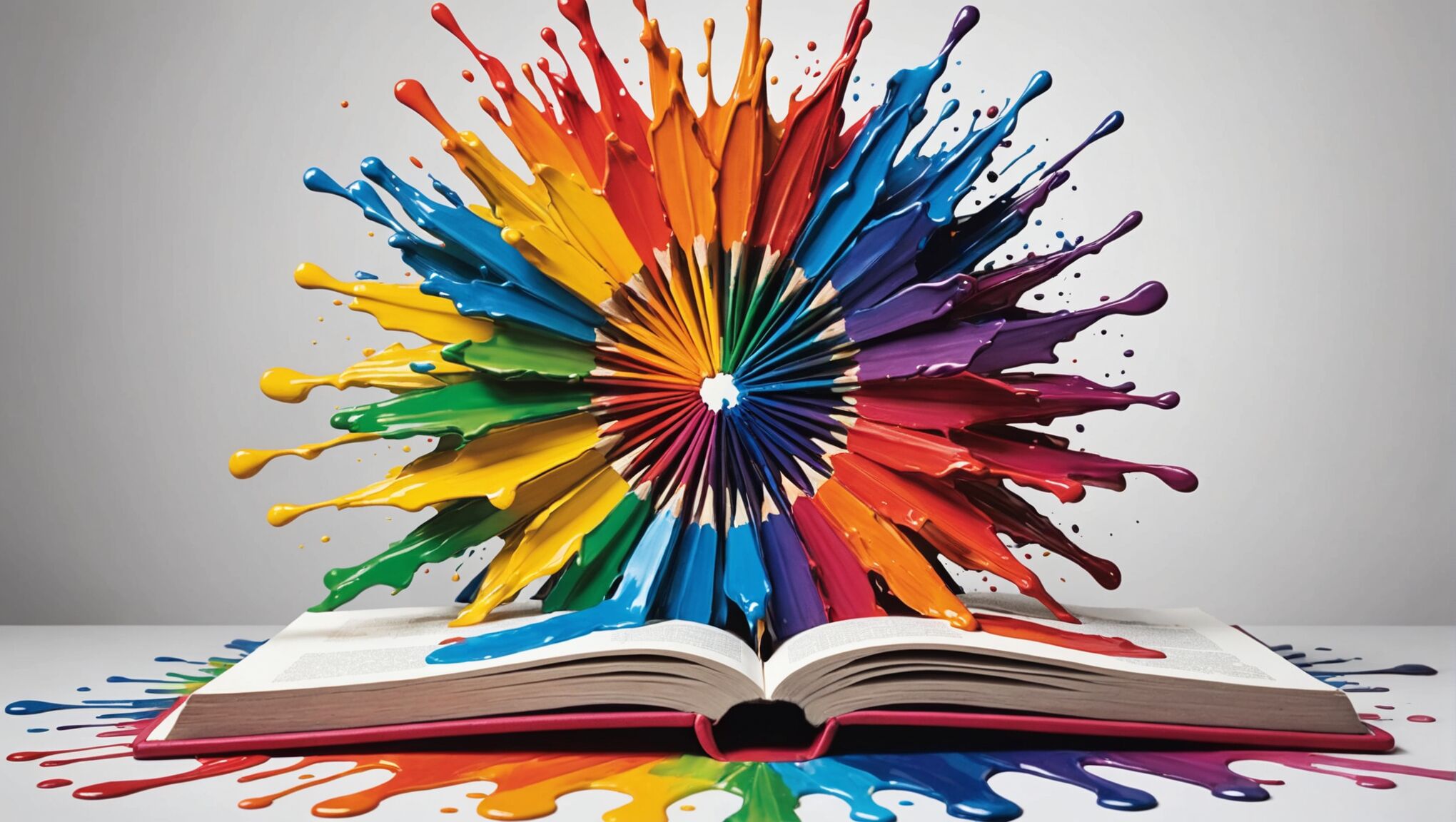Colors have a profound impact on human emotions and can effectively communicate the mood and tone of a book at first glance. When designing a book cover, understanding color psychology is crucial to evoke the desired emotional response from potential readers. Warm colors like red, orange, and yellow tend to elicit feelings of excitement, passion, and energy. These hues are often used for thrillers, romance novels, or action-packed stories. In contrast, cool colors such as blue, green, and purple convey calmness, tranquility, and mystery, making them suitable for self-help books, literary fiction, or fantasy genres.
The intensity and saturation of colors also play a significant role in emotional conveyance. Bright, vibrant colors can create a sense of joy and optimism, while muted or pastel tones might suggest a more introspective or melancholic atmosphere. Black and white, when used strategically, can evoke feelings of sophistication, timelessness, or even bleakness, depending on the context. It’s essential to consider color combinations as well, as they can create harmony or tension, further enhancing the emotional impact of the cover design.
Cultural associations with colors should also be taken into account, as they can vary across different regions and demographics. For instance, while white symbolizes purity and innocence in Western cultures, it is associated with mourning in some Eastern cultures. By carefully selecting and combining colors, designers can create a visual language that resonates with the book’s content and target audience, effectively conveying the emotional essence of the story before a single word is read.
Typography and emotional impact
Typography is a powerful tool in book cover design, capable of conveying emotion and setting the tone for the reader’s experience. The choice of font, its size, weight, and arrangement can significantly impact the emotional response elicited by a cover. Serif fonts, with their traditional and elegant appearance, often evoke a sense of reliability, respect, and timelessness. They’re particularly effective for classical literature, historical fiction, or academic works. In contrast, sans-serif fonts project a more modern, clean, and straightforward feel, making them suitable for contemporary fiction, self-help books, or technology-related titles.
“Typography is what language looks like.” – Ellen Lupton
The weight of the font also plays a crucial role in emotional conveyance. Bold, heavy typefaces can communicate strength, importance, or urgency, while lighter weights might suggest delicacy, subtlety, or sophistication. The size and placement of text elements can further amplify these emotions. Large, dominating text can create a sense of power or significance, while smaller, more discreet typography might evoke mystery or intimacy.
The style of lettering can also be tailored to match the book’s genre and emotional tone. Hand-lettered or script fonts can add a personal, intimate touch, perfect for memoirs or romantic novels. Distressed or grunge fonts might be used to convey edginess or rebellion, fitting for certain young adult or alternative genre books. Experimental or decorative typography can be employed to create intrigue or reflect the unique nature of the book’s content.
The spacing between letters (kerning) and lines (leading) can subtly influence the reader’s perception. Tightly spaced text might create tension or claustrophobia, while generous spacing can suggest openness or freedom. The alignment of text – whether centered, justified, or asymmetrical – can also contribute to the overall emotional impact. Centered text often conveys formality or balance, while asymmetrical layouts can create dynamic tension or a sense of movement.
Color and texture in typography add another layer of emotional depth. Metallic or glossy finishes can suggest luxury or futurism, while matte or textured effects might evoke a more organic, earthy feel. The interplay between the typography and other design elements, such as images or patterns, can create compelling visual narratives that resonate with the book’s themes.
Lastly, consider the emotional impact of negative space around the typography. Generous white space can create a sense of calm, sophistication, or allow the text to stand out dramatically. Conversely, densely packed design elements might convey complexity or intensity. By carefully crafting these typographic elements, designers can create book covers that not only catch the eye but also speak to the heart of the story within.
Imagery and symbolism
 Visual imagery and symbolism are powerful tools in book cover design, capable of instantly conveying complex emotions and themes. A well-chosen image or symbol can encapsulate the essence of a book, creating an immediate emotional connection with potential readers. When selecting imagery, designers must consider not only the literal representation of the book’s content but also the underlying emotions and ideas they wish to evoke.
Visual imagery and symbolism are powerful tools in book cover design, capable of instantly conveying complex emotions and themes. A well-chosen image or symbol can encapsulate the essence of a book, creating an immediate emotional connection with potential readers. When selecting imagery, designers must consider not only the literal representation of the book’s content but also the underlying emotions and ideas they wish to evoke.
Metaphorical imagery can be particularly effective in stirring emotions. For instance, a single withered rose on a cover might symbolize lost love or the passage of time, evoking feelings of melancholy or nostalgia. Conversely, a vibrant, blooming flower could represent hope, new beginnings, or personal growth. The key is to choose images that resonate on multiple levels, allowing readers to form their own emotional connections.
Symbolic elements can add depth and intrigue to a cover design. Ancient symbols, cultural icons, or even modern logos can be incorporated to hint at the book’s themes or setting. For example, an hourglass might suggest the concept of time running out in a thriller, while a maze could represent the complexity of relationships in a romance novel. These symbols act as visual shorthand, quickly communicating ideas that would take many words to express.
The style of imagery used can also significantly impact emotional response. Photorealistic images might create a sense of immediacy and reality, suitable for non-fiction or contemporary stories. In contrast, illustrated or abstract imagery can evoke a more imaginative or dreamlike quality, perfect for fantasy, children’s books, or experimental literature. The texture and quality of the imagery – whether it’s sharp and clear or intentionally blurred and mysterious – can further enhance the emotional atmosphere.
Color treatment of images plays a crucial role in emotional conveyance. A sepia-toned photograph might evoke nostalgia, while high-contrast black and white could create drama or tension. Vibrant, saturated colors might suggest energy or passion, while muted tones could convey subtlety or melancholy. The interplay between the imagery and the overall color scheme of the cover can create a cohesive emotional experience.
Juxtaposition of contrasting images or symbols can create powerful emotional narratives. For instance, a delicate butterfly perched on a gun barrel could symbolize the fragility of peace in a war novel. Such unexpected combinations can provoke thought and emotional engagement, encouraging readers to delve deeper into the book’s themes.
The scale and placement of imagery on the cover also influence emotional impact. A large, dominating image might create a sense of awe or importance, while smaller, more subtle visual elements could suggest mystery or invite closer inspection. The way images interact with typography and other design elements can create a visual hierarchy that guides the reader’s emotional journey across the cover.
Consider how imagery and symbolism can extend beyond the front cover. Wraparound designs that continue onto the spine and back cover can create a more immersive emotional experience. This approach allows for a broader canvas to tell a visual story, potentially incorporating additional symbolism or imagery that complements the front cover’s emotional message.
As you reflect on the power of imagery and symbolism in book cover design, consider how these elements might be applied to your own creative projects. How might you use visual metaphors to convey complex emotions? What symbols resonate with you personally, and how could they be incorporated into meaningful designs? The art of visual storytelling through cover design offers endless possibilities for emotional expression and connection with readers.
Layout and composition for emotional resonance
The layout and composition of a book cover are crucial elements in creating an emotional resonance with potential readers. A well-structured design can guide the viewer’s eye, emphasize key elements, and create a visual hierarchy that enhances the overall emotional impact. One effective technique is the use of the rule of thirds, which divides the cover into a 3×3 grid. Placing important elements along these lines or at their intersections creates a balanced and visually pleasing composition that can evoke a sense of harmony or tension, depending on the desired effect.
Negative space, or white space, plays a significant role in emotional conveyance. Generous use of empty space can create a sense of calm, simplicity, or isolation, which might be appropriate for minimalist literary fiction or introspective memoirs. Conversely, a densely packed cover with little negative space can evoke feelings of chaos, excitement, or claustrophobia, suitable for action-packed thrillers or complex narratives.
The focal point of the cover is essential in directing the viewer’s emotional response. A centrally placed, dominant image or text can create a sense of importance or stability. Off-center or asymmetrical compositions can generate dynamism and intrigue, encouraging the viewer to explore the cover further. The use of leading lines, whether explicit or implied, can guide the viewer’s gaze and create a sense of movement or direction, potentially reflecting the book’s narrative journey.
Layering elements in the composition can add depth and complexity to the emotional narrative. Overlapping images, text, or patterns can create a sense of mystery, multi-dimensionality, or the passage of time. This technique is particularly effective for novels with intricate plotlines or multiple timelines. Conversely, a clean, uncluttered layout might evoke feelings of clarity, directness, or simplicity.
The orientation of elements on the cover can also influence emotional perception. Vertical lines and arrangements often suggest strength, growth, or aspiration, while horizontal compositions can evoke calmness, stability, or expansiveness. Diagonal lines and arrangements can create a sense of dynamism, tension, or instability, which might be appropriate for action-oriented or psychologically complex narratives.
Scale and proportion in cover design can dramatically affect emotional impact. Oversized elements, such as large typography or images that extend beyond the cover’s boundaries, can create a sense of importance, power, or overwhelming emotion. In contrast, small, delicate elements might evoke feelings of intimacy, detail-orientation, or vulnerability.
The use of frames or borders within the cover design can also contribute to emotional resonance. A strong frame can create a sense of containment or focus, directing attention inward and potentially evoking feelings of intimacy or intensity. Broken or incomplete frames might suggest themes of escape, transformation, or the breaking of boundaries.
Consider the emotional impact of symmetry versus asymmetry in layout. Symmetrical designs often evoke feelings of balance, harmony, and stability, which might be suitable for classic literature or self-help books. Asymmetrical layouts can create tension, excitement, or a sense of the unexpected, potentially more appropriate for contemporary fiction or avant-garde works.
The integration of texture into the layout, whether through actual tactile elements or visual representations, can add another layer of emotional depth. Rough textures might evoke rawness or authenticity, while smooth, glossy surfaces could suggest sophistication or modernity. The interplay of different textures within the composition can create visual interest and emotional complexity.
Consider how the layout and composition interact with the book’s format and physical properties. The way design elements wrap around the spine or extend to the back cover can create a cohesive emotional experience. For ebooks, consider how the cover will appear as a thumbnail and how the composition will translate to smaller screens, ensuring that the emotional impact is maintained across different viewing contexts.
